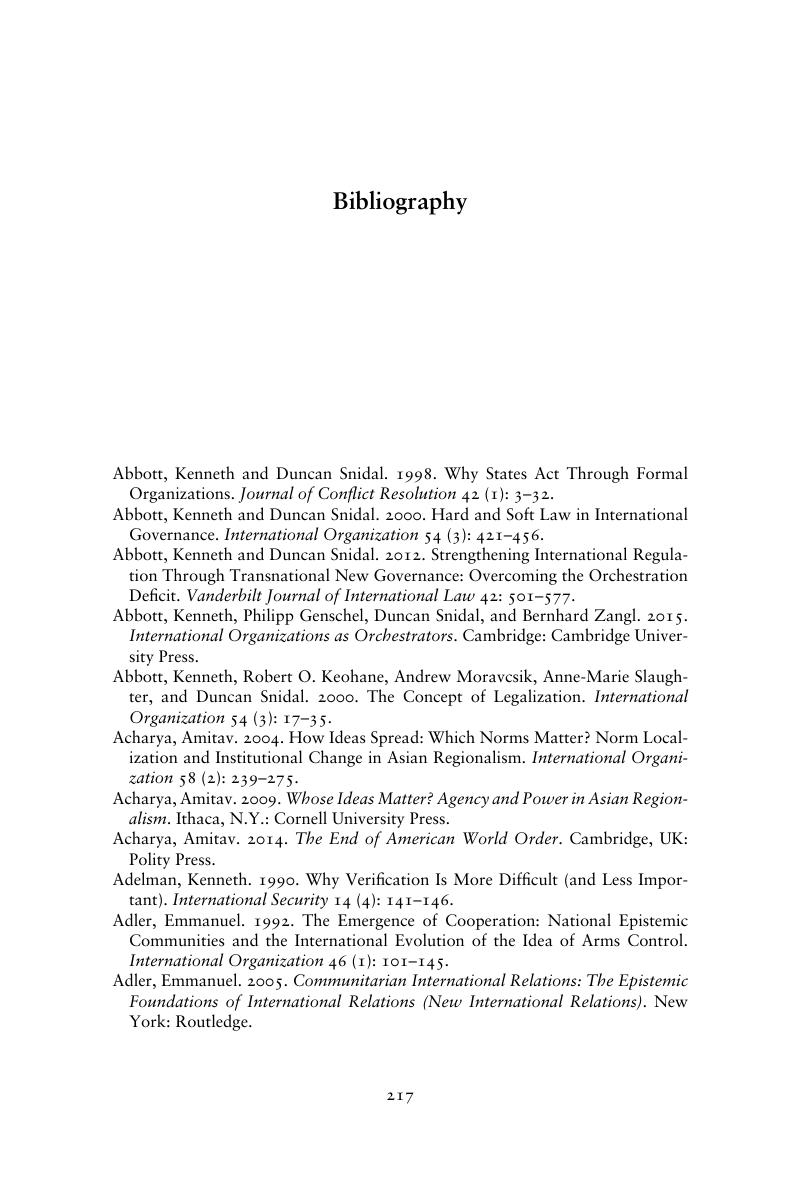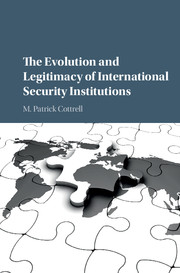Book contents
- Half title page
- Title page
- Copyright page
- Dedication
- Contents
- Contents
- Contents
- Book part
- Introduction
- 1 Institutional Replacement in International Politics
- 2 Legitimacy and Institutional Replacement
- 3 From League of Nations to United Nations
- 4 The Emergence of the Mine Ban Treaty
- 5 The Resilience of the Nuclear Nonproliferation Treaty
- 6 Legitimacy, Institutional Change, and the Future of Global Order
- Bibliography
- Index
- References
Bibliography
Published online by Cambridge University Press: 05 May 2016
- Half title page
- Title page
- Copyright page
- Dedication
- Contents
- Contents
- Contents
- Book part
- Introduction
- 1 Institutional Replacement in International Politics
- 2 Legitimacy and Institutional Replacement
- 3 From League of Nations to United Nations
- 4 The Emergence of the Mine Ban Treaty
- 5 The Resilience of the Nuclear Nonproliferation Treaty
- 6 Legitimacy, Institutional Change, and the Future of Global Order
- Bibliography
- Index
- References
Summary

- Type
- Chapter
- Information
- Publisher: Cambridge University PressPrint publication year: 2016

